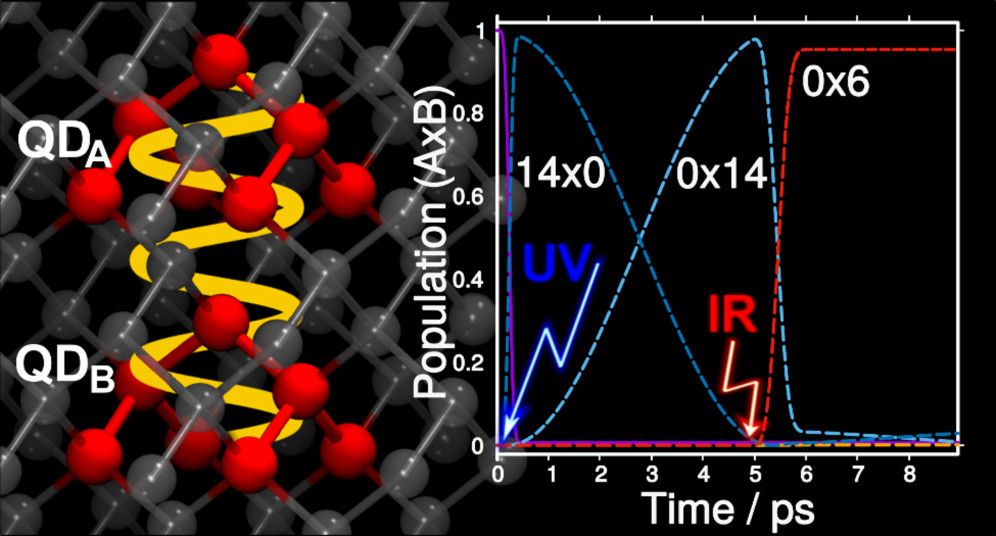The creation, transfer, and stabilization of localized excitations are studied in a donor–acceptor Frenkel exciton model in an atomistic treatment of reduced-size double quantum dots (QDs) of various sizes. The explicit time-dependent dynamics simulations carried out by hybrid time-dependent density functional theory/configuration interaction show that laser-controlled hole trapping in stacked, coupled germanium/silicon quantum dots can be achieved by a UV/IR pump–dump pulse sequence. The first UV excitation creates an exciton localized on the topmost QD and after some coherent transfer time, an IR pulse dumps and localizes an exciton in the bottom QD. While hole trapping is observed in each excitation step, we show that the stability of the localized electron depends on its multiexcitonic character.
